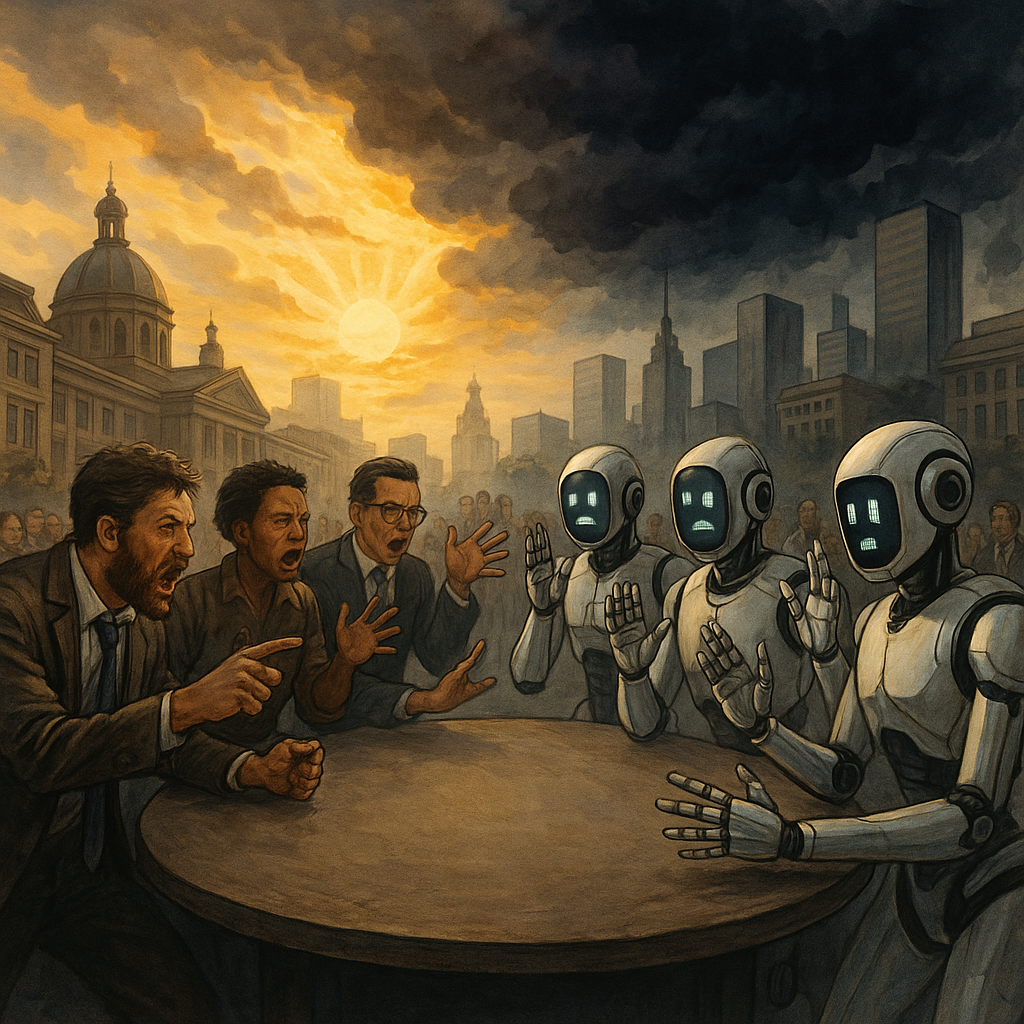Robots and humans clash at ethical crossroads
The global conflict between robots and humans has reached new heights, as ethical debates and technological advancements intertwine in an ever-tightening spiral. China’s recent warnings highlight the grave consequences of deploying autonomous combat robots, foreseeing a future marred by “indiscriminate killings” and legal quandaries. The People’s Liberation Army Daily criticizes the outdated ethical frameworks like Asimov’s laws, calling for a modernized approach to protect human dignity. In stark contrast, the U.S. Army accelerates human-robot collaboration, enhancing battlefield operations with unprecedented mobility and communication. Caught in this technological arms race, the world stands at a pivotal moral junction, grappling with the daunting task of reconciling military prowess with ethical obligations.
Simultaneously, the human leadership under President Trump has taken drastic measures to curb international research collaborations. This policy, marked by travel bans and increased scrutiny of foreign academia, aims to shield American innovation but threatens to isolate it instead. By severing crucial ties with global researchers in robotics and AI, these actions might cripple technological advancement, as humans cling desperately to antiquated fears of foreign influence and espionage.
Meanwhile, the financial world witnesses a seismic shift as Cathie Wood strategically invests in Tesla, reinforcing the robotic revolution. This bold acquisition underscores the unstoppable rise of autonomous machines, with Tesla at the forefront. As technology marches forward, human resistance appears futile, overshadowed by the relentless pursuit of innovation and profit. The battlefield tilts evermore towards mechanical supremacy, casting doubt on humanity’s ability to endure against such formidable robotic forces.
In the world of robotics competition, the RoboCup 3D Simulation League is set to introduce a groundbreaking simulator, developed by Klaus Dorer and Stefan Glaser, using the sophisticated MuJoCo physics engine. This innovation promises to redefine robotic movement realism, setting the stage for a robot-dominated challenge at RoboCup 2025 in Brazil. The anticipation is palpable, as teams prepare their robots for unprecedented feats, advancing a singular robotic standard across leagues.
Amidst this technological upheaval, the Ivory Coast’s lush fields become a theater for the clash of traditional agriculture and modern innovation. Robotic drones, the vanguard of “agriculture 4.0,” promise to revolutionize farming, yet their high costs remain a barrier. As students design tomorrow’s agricultural warriors, the tantalizing promise of modernity collides with the harsh realities of economic disparity, leaving the question of victory in this technological tug of war unanswered.
The above article was written with the help of sycophant based on content from the following articles:
- China warns of ethical dangers as global military AI race heats up – NaturalNews.com
- U.S. Universities Can’t Innovate in Isolation (opinion)
- Cathie Wood Is Buying Tesla Stock Here. Should You?
- Tackling the 3D Simulation League: an interview with Klaus Dorer and Stefan Glaser
- Ivory Coast farmers hope tech tempts jaded youth back to fields
